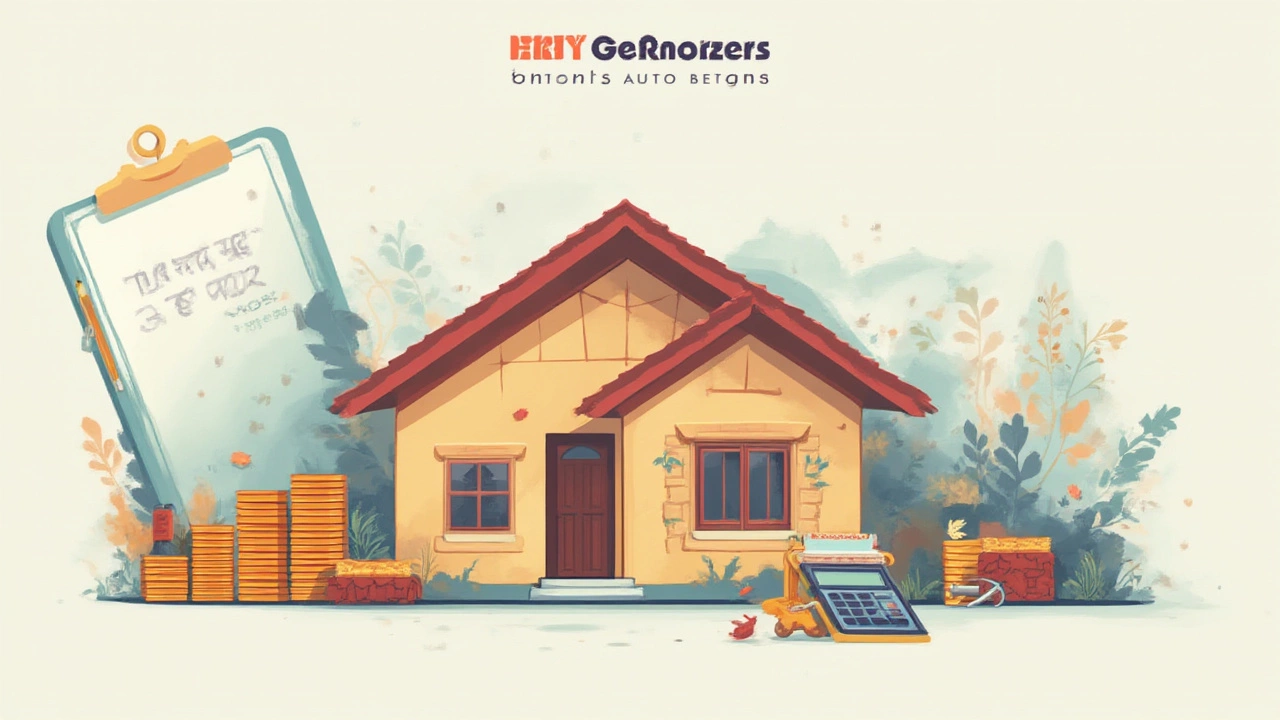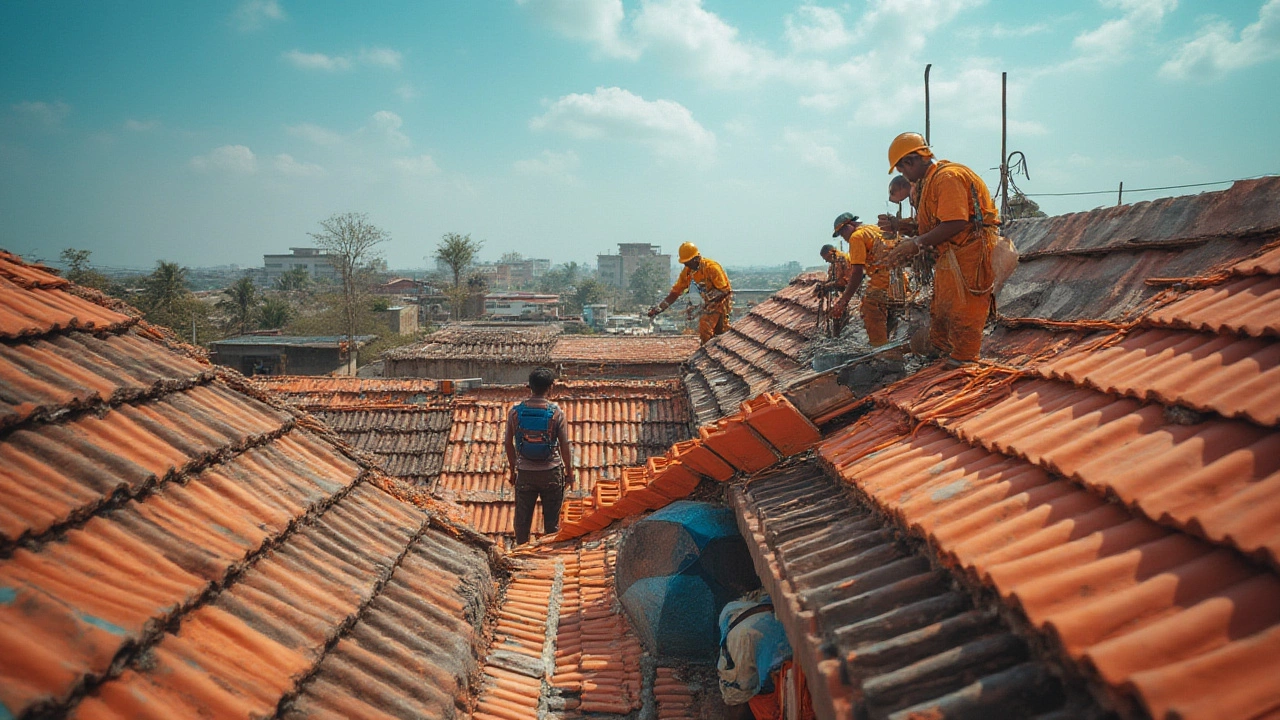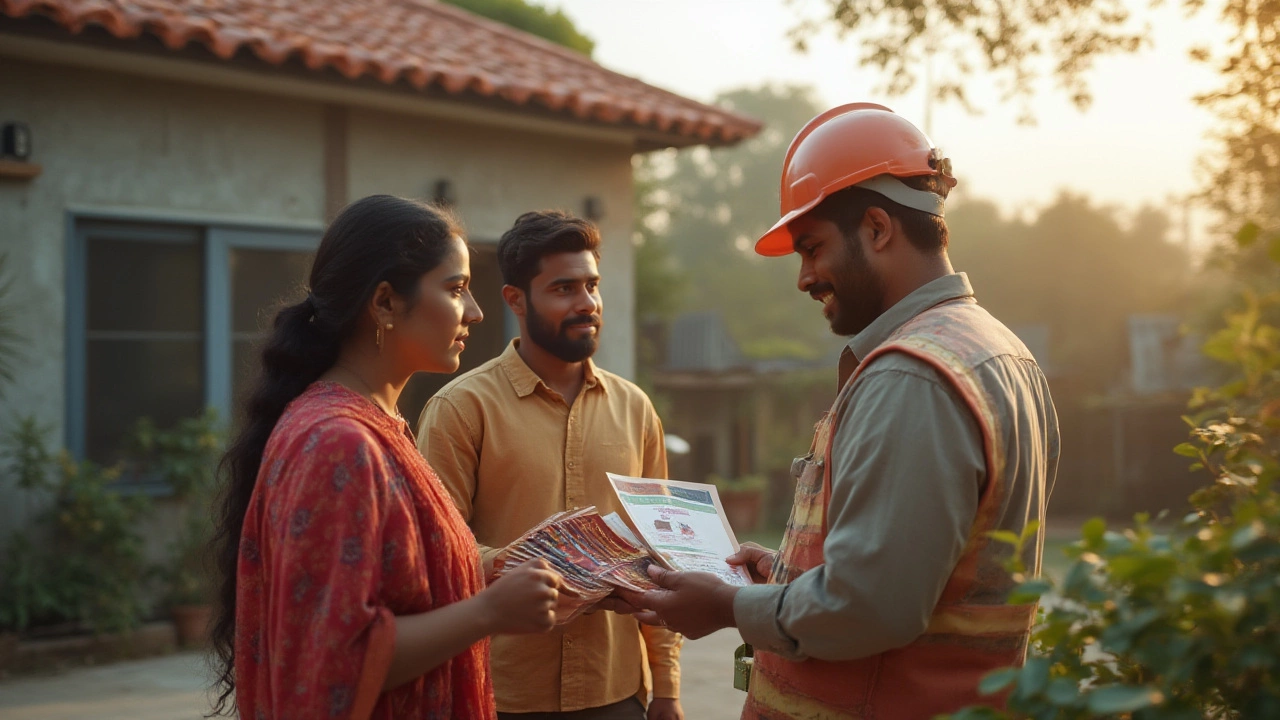So you look up at your ceiling and spot that faint water stain. Maybe a few shingles are curling up or missing. If you’ve owned your home for more than a decade, this is the kind of reality check that creeps up on you. It isn’t glamorous, but the price tag for a new roof sits right up there with the big, sweaty home improvement expenses. While people love to daydream about kitchen islands or fancy bathrooms, few jump out of bed itching to throw money at the thing that actually keeps out the rain. Here’s the deal—budgeting for a roof isn’t just another line item, it’s one of the most important decisions you’ll make for your home’s skeleton. Ignore it, and you risk disaster. Hit it straight on, and you’ll sleep easier during the next thunderstorm. So, let’s talk turkey about how to budget for a roof—what really affects the price, which numbers you’ve got to watch, and what tricks smart homeowners use to not get blindsided.
The Real Costs Behind Roofing: Not Just Shingles and Nails
Most people will tell you the price of a new roof is just about materials or the size of your house. That’s a big part, but it’s got more layers than you’d think—pun fully intended. Let’s rip this apart. First, the average roof replacement in the US hovers from $8,000 to $20,000 for a typical single-family home (2,000 to 2,500 square feet). But the range can go wild—luxury homes, custom cuts, and premium materials can squeeze this number north of $50,000. What drives these numbers? You’ve got the obvious: square footage, materials like asphalt shingles versus metal or tile, and labor. But stealth costs sneak in. For instance, your home’s pitch (that’s how steep the roof looks from the yard) can drive labor costs up fast. Steep roofs need extra safety gear and more hands on deck, and contractors won’t risk it for free.
Material alone is a game changer. Asphalt shingles are still the big seller—about 80% of US residential roofs use them, mostly because they’re affordable and last about 20 years. Metal panels have gotten more popular, lasting over 40 years with the right care, but with up to three times the upfront cost. Clay tiles and slate? Gorgeous, but now you’re playing in the major leagues (think $30–$50 per square foot for material and install alone). And if you live somewhere that gets hammered by hail, tornadoes, or wild winters, your insurance company may put their foot down and demand better materials, which means automatically higher base costs.
Now toss in hidden monsters. Does the old roof need a full tear-off? Most states require removing two or more layers before a new one goes on. That’s not just a few strong backs and a roll-off dumpster—it’s extra dump fees, extra labor, and sometimes, a few surprises like rotten decking or “hey, your rafters have termites.” Surprise wood rot can tack on thousands. Building code upgrades are another classic. Some older houses need extra work just to pass inspection, like adding hurricane clips or extra insulation. Want a warranty that’s more than a handshake? The best ones often require certified installation, and guess what? Those certified contractors charge more.
Permits round it out. Municipal permits cost anywhere from $75 to $4,000 depending on where you live. Cities like Los Angeles or New York are notorious for high fees, while in small towns you might pay less than $200. But skip the permit, and you could be fined or even have to rip off your brand-new roof if an inspector catches you.
Let’s not forget current inflation. Material costs in 2025 have climbed about 15% in just three years, thanks to global supply chain headaches and labor shortages. Contractors’ schedules are packed, so expect to pay a premium for a rushed job or top-tier crew. And as a reality check, here’s a table that breaks down today’s (2025) average costs:
| Material | Cost per Sq. Ft. (Installed) | Lifespan (Years) |
|---|---|---|
| Asphalt Shingles | $4 - $7 | 15 - 20 |
| Metal Panels | $10 - $15 | 40 - 70 |
| Tile (Clay/Concrete) | $15 - $30 | 50+ |
| Slate | $20 - $50 | 75 - 100 |
One other thing—don’t forget attic ventilation and new gutters often get tacked onto a roof job. They’re not just extras, they’re frequently needed to get your roof warranty in place. So, start building your budget with a 10–20% “unexpected costs” buffer right off the top. If your roof hasn’t been replaced in 30 years—double it. That’s just being honest.

Planning Your Roof Budget: Where to Start and How to Stay Sane
The idea of writing a check that big can feel overwhelming. The first step is always assessing what you have. Is your roof nearing the end of its life, or are you holding on for another year? Sometimes you can squeeze out a little more life with spot repairs, but you can’t keep patching forever. When you see cracked, curling, or missing shingles across several areas, granules showing up in your gutters, interior water stains, or roof sagging, the clock is ticking.
Grab your tape measure and calculator—or even better, use one of the many online roof calculators. Input your home’s square footage, add a little extra for roof pitch, and you’ll get a ballpark “roofing area” in squares (1 square = 100 sq. ft.). Most homes need anywhere from 20 to 30 squares. Factor this in with your preferred material from the earlier table.
Now, be realistic about your DIY skills. Replacing a few shingles is one thing. Ripping up a whole roof is a pro job. The risk of botching installation, missing code upgrades, or voiding a warranty is high if you shortcut here. Most reputable roofing companies do free quotes, and it’s smart to invite at least three to check things out. Pay attention: if one quote is suspiciously low, ask why. Some low-bid companies skimp by using subpar materials or non-certified crews—no good if you want your roof to last. If you’ve got insurance, call them before starting. Damage from storms or fallen trees can sometimes trigger partial or full coverage, especially if your policy has a “roof replacement cost” rider instead of “actual cash value.” The latter can leave you covering thousands extra if your roof is more than 10 years old. Know your policy terms.
Roofers will almost always pop up extras once work begins. Don’t be tempted by fancy add-ons you don’t need—they can balloon your price, but some upsells are worth considering. Ice-and-water shield membranes, synthetic underlayment, and heavy-duty flashing aren’t just “nice to have” if you live somewhere wild weather is the norm. If you’re thinking about solar panels, mention this now; certain roof prep can make solar install smoother and cheaper down the line. You want your roof to last as long as possible—so don’t nickel and dime the stuff that protects its core.
Once you have your real number, here’s how to organize your budget:
- Get three local quotes, itemized with full details on labor, material, warranty, and extras.
- Add 15% to that average for surprise repairs.
- Lock in your financing—don’t commit until your loan, equity line, or savings are actually available.
- Ask roofers about current discounts, seasonal rates, or manufacturer warranties that extend coverage for free.
If your budget’s tight, favor higher-quality shingles on a small area, rather than covering everything in the cheapest stuff. That way, you’re reinforcing the most vulnerable spots (like valleys or eaves) and buying time for the rest. If you stagger your project in phases, discuss this up front—a good roofer can lay a plan that controls your costs and helps you avoid re-doing work.
Some savvy homeowners even ask about pairing roof replacement with attic insulation or ventilation upgrades. Bundling these often gets you a break from roofers, and you’ll save big on energy bills over the roof's lifespan. Remember, home improvement loans, HELOCs, or energy-efficiency grants are still out there in 2025, and some utility providers offer rebates for certain "cool roof" installs that reflect more sunlight and lower air conditioning bills.

Smart Ways to Save (and Not Get Burned)
Let’s face it, nobody brags about a new roof. You don’t instagram your new flashing. But saving several thousand dollars—now that’s something you’ll feel great about. So how do you cut costs without inviting leaks or drama? Start by picking the right season. Spring and early summer are high season for roofers, which means prices and wait times are at their peak. Try booking for late summer, fall, or even winter (in milder climates). Many roofers offer discounts for off-peak jobs just to keep their crews busy year-round. Make sure they actually seal your roof if winter weather turns wild mid-project.
Group up if you can. Sometimes neighbors band together for a "block buy," negotiating a better price from a company that can do several roofs at once. Roofers save on mobilizing and ordering materials in bulk, and they might share the savings. It’s not as rare as you think—ask around your HOA or community Facebook group.
Material leftovers or overruns are another hack. Contractors sometimes have a stockpile of perfectly good shingles or panels from canceled jobs which don’t match the color most people want, but are just as reliable. If you’re not picky about the exact shade, you can snag a real bargain. Just make sure leftovers still meet warranty and code—don’t trade away coverage for spare parts.
Don’t get lulled into the “20-year shingle” hype if your climate is rougher than average. Yes, some shingles tout 20- to 30-year life spans, but homes in states like Florida or Colorado see more sunlight, hurricanes, or hail, and roofs here often last only half the label. The National Roofing Contractors Association found that the real-world lifespan of ordinary 3-tab asphalt shingles in storm-prone zones is only 12–15 years. Spend a little more on upgraded materials if your area gets slammed by weather, or you’ll wind up paying twice.
Pay attention to financing. Many roofers in 2025 offer flexible payment plans, zero-interest deals for short-term payoff, or partner with home improvement lenders. Read the fine print and don’t blow your budget chasing an “interest free” teaser rate that jumps in six months. Credit cards work in a pinch but only if you plan to pay them off quickly. Shop around for the lowest rate, and prioritize loans with no prepayment penalties so you can wipe out the debt sooner if cash frees up.
Finally—protect your investment. Once the new roof is on, keep all your paperwork—contracts, warranty info, and proof of payment—in a secure place. Register your warranty with the manufacturer if required (that’s a step a lot of folks skip). A well-documented roof replacement can bump up home value by as much as 63% of the cost, according to Remodeling Magazine’s annual Cost vs. Value Report.
And one last trick? Routine maintenance can double the lifespan of your roof. Clean your gutters in spring and fall, look for blown-off shingles after storms, and don’t let tree limbs graze the surfaces. Taking just an hour a season can help you spot small issues before they become five-figure headaches. You don’t need to be a pro, but being attentive pays off—literally.
This isn’t the kind of project that’ll get you high-fives at your next BBQ, but few things buy as much peace of mind—or as much dry sleep—than a solid new roof over your head. Do your homework, know where every dollar’s going, stick to your guns, and enjoy watching those thunderstorms from a dry, safe living room.
